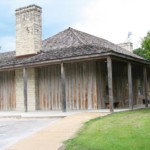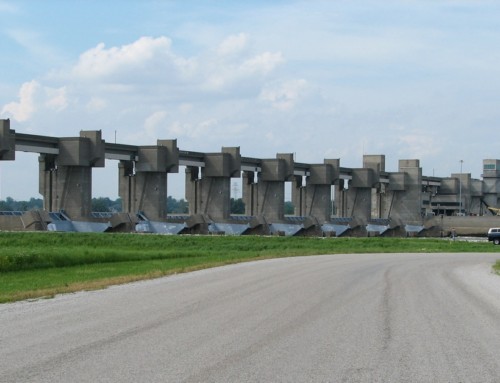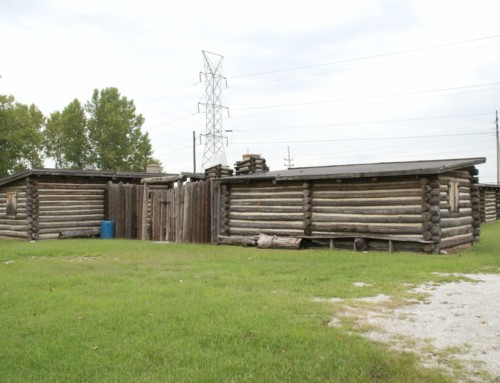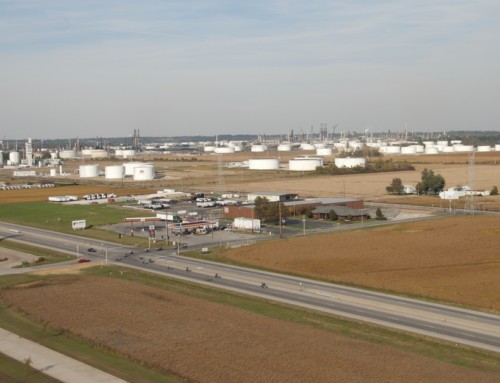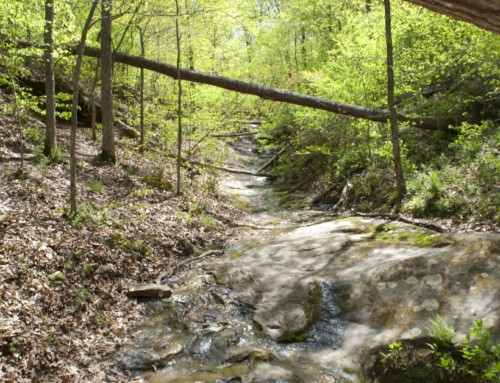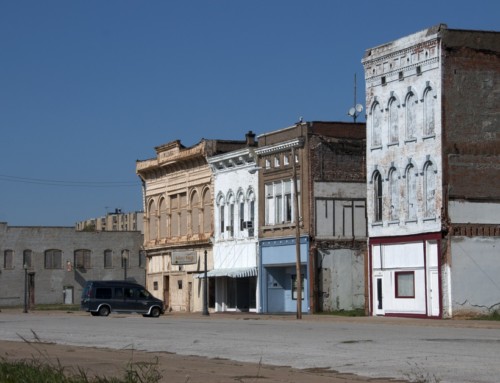Introduction
Prairie du Rocher is another of the old French colonial settlements in the American Bottom. Today, it is also a popular stop for day-trippers and bikers (motorized and not) out for a ride on warm weekend days.
History
Founded in 1722 by Jean St. Therese Langlois, the nephew of Fort de Chartres‘ Commandant Pierre Boisbriant, the village, as one history book recounted “never grew to any great size, and no event of importance seems to have marked its history.” Still, you probably want to know a few things about it.
The name (Rock Prairie) references the rocky bluffs next to the village. It was initially an agricultural village loosely associated with Fort de Chartres. Like most French colonial towns, Prairie du Rocher had a common field, three square miles of it, that the community shared for grazing. The village was home to 22 French-Canadian families in 1766, plus a few Illini Indians and enslaved blacks.
When Britain took control of the Illinois country, many of the town’s French residents moved across the Mississippi River to St. Louis or Sainte Genevieve. The town attracted a few new residents, though, so by 1800 about two hundred people called Prairie du Rocher home. Still, by 1840, the town had just one general store to go with its flour mill and saw mill.
The first Church of St. Joseph in Prairie du Rocher was built in 1734 and replaced in 1858. In 1881, it got a steeple and a new addition on the front. In the latter half of the 1800s, the church celebrated mass in French, German, and English.
Residents tried to incorporate in 1825 and 1835 but neither took. Prairie du Rocher finally became an incorporated village in 1871. Farming was the main occupation among its residents, but a few also worked in a nearby quarry.
Prairie du Rocher today still has a dozen buildings that date to the 1700s, like the Melliere House from 1735. A New Year’s Eve tradition known as La Guiannee also dates to the earliest times; to this day, some locals dress in 18th-century garb and go door-to-door singing the old French song of that name.
The village survived a close call with the Mississippi River in the Great Flood of 1993; the levee district’s late-night decision to blow an extra hole in the upstream levee might have made the difference.
Exploring the Area
Just south of Prairie du Rocher on Bluff Road, there’s a marker next to a bluff for the Modoc Rock Shelter. Archaeological explorations found evidence that humans have repeatedly used the site for short-term shelter, beginning up to 9,000 years ago.
The Creole House in Prairie du Rocher (Market St.) dates to 1800 and is a bit of an architectural mash-up, with part of it built using old European half-timber construction and part built using American frontier style methods with studs instead of posts. The house is now owned by the Randolph County Historical Society.
At Fults Hill Prairie Nature Preserve (618.826.2706), follow a 1.5 mile hiking trail that loops up from a bottomland forest to a blufftop prairie and back down. It is a moderately difficult hike to the top, but it comes with good views of the river valley. The site is 1.5 miles south of Fults. The parking lot is on the bluff side of Bluff Road.
Fort de Chartres State Historic Site is just northwest of Prairie du Rocher; click on the link to learn more about the fort.
Entertainment and Events
Farmers Market
Prairie du Rocher hosts a farmers market every other Saturday morning from late spring through fall in the park.
Festivals
There’s a free concert in the park every other Wednesday evening from June through August.
In early October, Prairie du Rocher hosts an annual bike ride called Tour de Bluff (618.859.3742). Riders can choose from routes that wind 12, 25, or 42 miles through the region’s bottomland country roads. Money raised from the event helps maintain the historic Creole House.
On New Year’s Eve, the La Guiannee singers visit the fort and neighboring Fort du Chartres to reenact an ancient tradition. Costumed participants visit houses and sing traditional French songs. The event is free and open to the public.
**Prairie du Rocher is covered in Road Tripping Along the Great River Road, Vol. 1. Click the link above for more. Disclosure: This website may be compensated for linking to other sites or for sales of products we link to.
Where to Eat and Drink
Lisa’s Market Street Grille (211 Market St.; 618.284.3374) is a popular place for home cookin’ at affordable prices. The restaurant gets crowded on summer weekends.
Where to Sleep
The Victorian home built for William Connor in 1906 is now the Conner House Bed and Breakfast (315 Main St.; 618.284.8752). There are four suites, each with a private bath; guests are treated to a full breakfast in the morning.
Where to Go Next
Heading upriver? Check out Fults.
Heading downriver? Check out Fort de Chartres.
Community-supported writing
If you like the content at the Mississippi Valley Traveler, please consider showing your support by making a one-time contribution or by subscribing through Patreon. Book sales don’t fully cover my costs, and I don’t have deep corporate pockets bankrolling my work. I’m a freelance writer bringing you stories about life along the Mississippi River. I need your help to keep this going. Every dollar you contribute makes it possible for me to continue sharing stories about America’s Greatest River!
©Dean Klinkenberg, 2018
A Song for Prairie du Rocher
La Guignole, recorded in 2013 at Prairie du Rocher (the song begins around the 4:45 mark)
